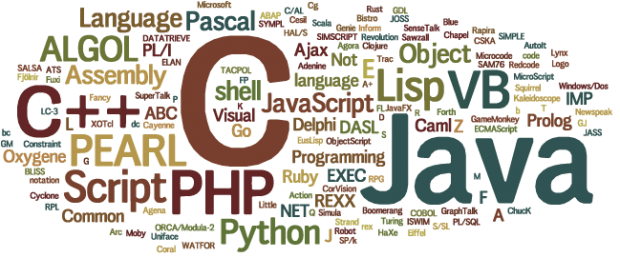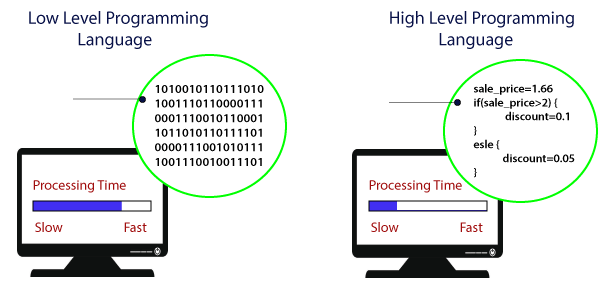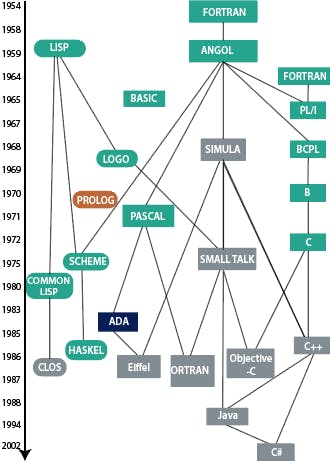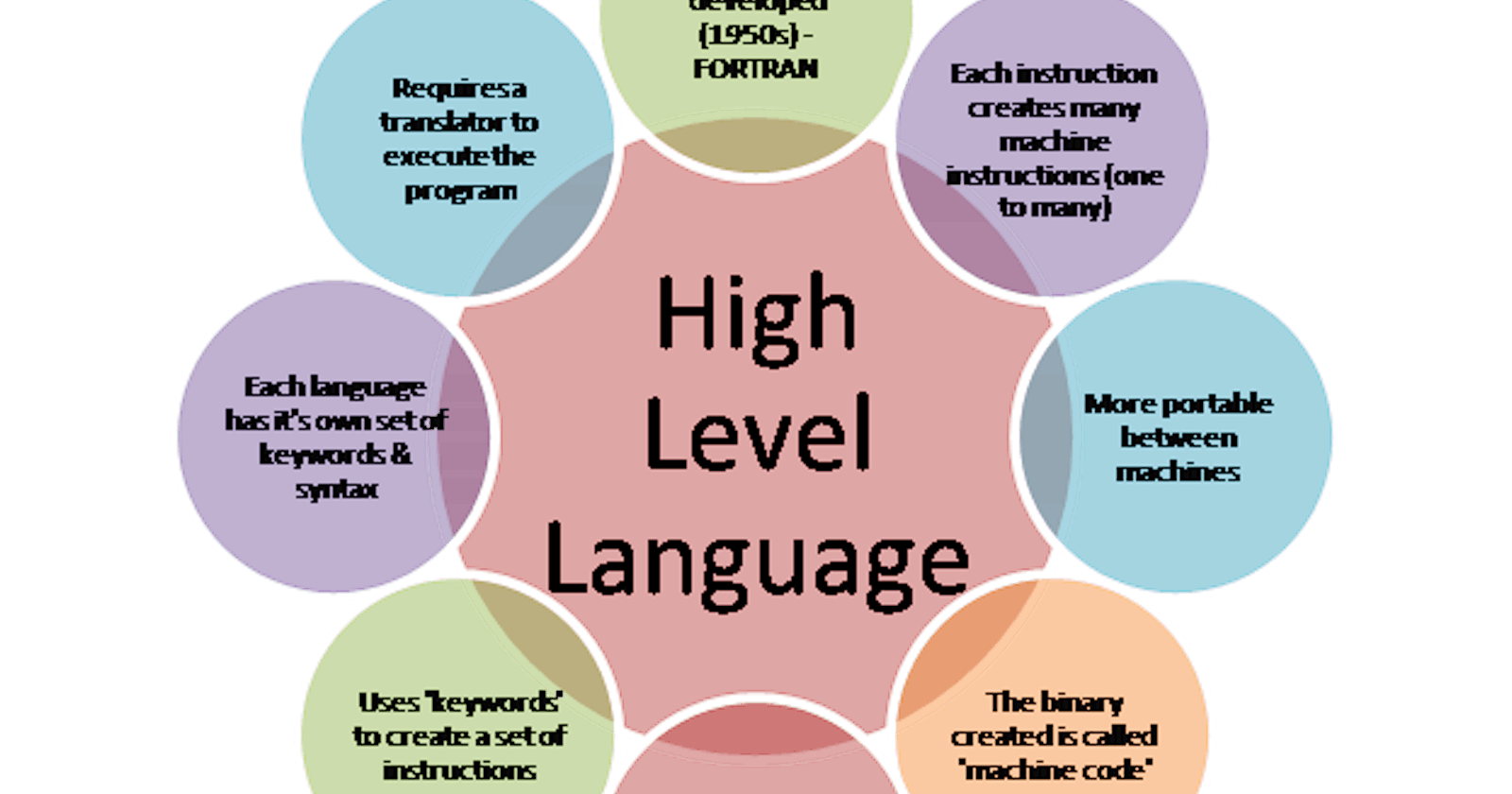 The high level language is programming language such as C++, COBOL, FORTRAN, JAVA, PHP, PYTHON, RUBY .
These languages have strong abstraction, the style and the context which are more comfortable to learn. It never needs the addressing of hardware constraints when developing a program.
The high level language is programming language such as C++, COBOL, FORTRAN, JAVA, PHP, PYTHON, RUBY .
These languages have strong abstraction, the style and the context which are more comfortable to learn. It never needs the addressing of hardware constraints when developing a program.
The program of high level language must be interpreted before the execution. The high level language deal with the variable, arrays objects, complex, arithmetic expression, subroutine and function, loops, threads, locks etc. The high level language are closer to human language and far from machine language. It is similar to human language and then machine is not able to understand this language.
High level language are coders friendly, easy to code, debug and maintain. These language do not interact directly with the hardware. These language are easy to implement. The software of translation plays an important role in the conversion of a high level language to machine language.

The advantages and disadvantages both exist in a high level language because the translator convert the program into binary language before the execution. The High level language is close to programmer and far away from the machine. We are explaining some high level language below:-
- FORTRAN The name of this language indicates it's meaning which is formula translation because it was designed for easy translation of math formula into code. This language was published in 1957 and it is the first high level programming language which is used for the scientific purpose. The coders were able to write the language 500% faster in high level language as compared to low level language. The efficiency was reduced by 20% and thi thing allowed the programming to focus more on the problem solving aspect of the problem.
COBOL The Common Business Oriented Language was developed in 1959 and used for the business and Administration purpose. When we save some data due to business purpose and we compute that data after sometime then we require the COBOL language. This language still used by the banks and other major companies which depends heavily on the accuracy and stability of their program to keep their companies growing.
BASIC The basic language was the first language developed for the non professional programmer. There is no need of any prerequisite to learn the Basic language. The meaning of BASIC language is Beginners all purpose symbolic instruction code.
PASCAL The PASCAL is the first programming language used for the teaching tool. It is a procedural programming language. This language support structured programming and data structure.
SIMULA The SIMULA was first object oriented programming language. It was developed in 1960s.The First version of this language was developed as an extension of ALGOL and the second version that Simula67 was developed in 1967.

The high level language are machine independent. The programmer or coder do not require to know anything about the internal structure of the computer on which high level language program to write instructions using English word and familiar with the mathematical symbols and expression.
Compiler
The compiler is the translator program software. This software can translate into it's equivalent machine language program. The complier compiles a set of machine language instructions for every program in a high level language.

Linker
The linker is used for the large program in which we can create some module for the different task. When we call the modules the whole job is to link to that module and program is processed. We can use a linker for the huge software storing all the lines of program code in a single source file.
Interpreter
The interpreter is the high level language translator. It takes one statement of the high level language program and translate it into machine level language instruction. The complier translate the entire source program into an object program but the interpreter translate line by line.

Advantage
The high level language is machine independent.
It is easier to learn and use.
Few errors exist during the program development.
The high level language provide better documents.
It is easier to maintain.
Disadvantages
The high level language takes additional time to translate the source code to machine code.
The program of high level language are comparatively slower than the program of low level language.
It cannot Communicate directly with the hardware.
Written by : Deepshikha Niyogi
